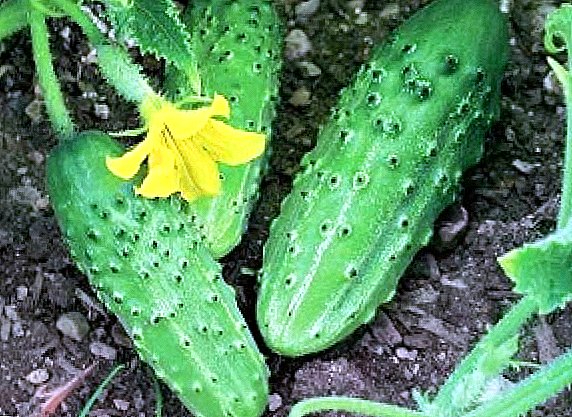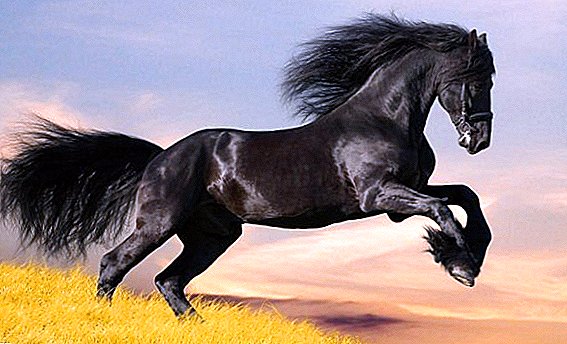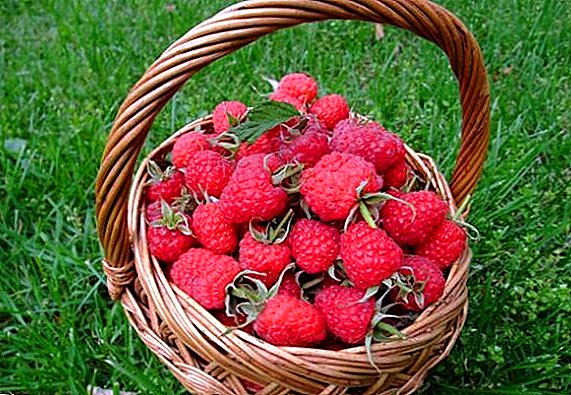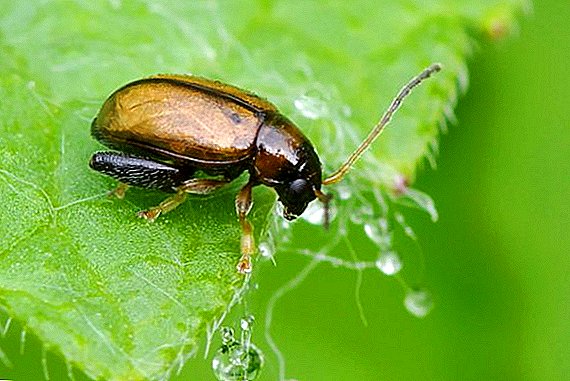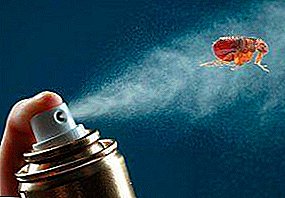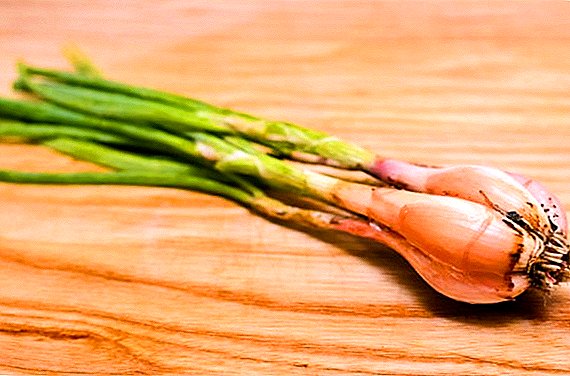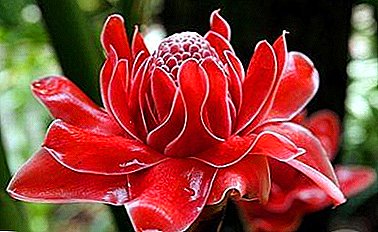 When planting a particular crop, you should not overlook the basic properties of the soil used, since the quality of the crop depends on its fertility. We are accustomed to use a variety of fertilizers, but few people think about exactly what components are missing in the composition of the soil. Of course, it’s impossible to determine this by eye, but it’s just necessary to know about the main characteristics of the substrate - we’ll analyze them further.
When planting a particular crop, you should not overlook the basic properties of the soil used, since the quality of the crop depends on its fertility. We are accustomed to use a variety of fertilizers, but few people think about exactly what components are missing in the composition of the soil. Of course, it’s impossible to determine this by eye, but it’s just necessary to know about the main characteristics of the substrate - we’ll analyze them further.
Basic soil properties
The soil is a whole system with its own rhythm of life and the rules of development, so it is not surprising that it may have very different properties. Consider the main ones.
Fertility
Fertility of the soil is commonly understood as the whole set of its properties and processes occurring within the processes that contribute to the normal growth and development of plants. A substrate containing a huge amount of nutrients is considered fertile, among which nitrogen, potassium, magnesium, copper, phosphorus, sulfur and, of course, humus should be particularly distinguished (up to 10% in good soils).
Learn how to improve soil fertility.All these components are closely linked, so you should not be surprised if the lack of one component or the violation of any process provokes a change in all others. From time immemorial, a person evaluates the quality of the soil from the point of view of fertility, which determines the abundance of the crop and the beauty of ornamental plants.
Did you know? The soil is the second largest carbon storage, giving first place to the oceans.
Mechanical composition
Mechanical composition is another very important property that allows to relate the soil to a particular variety. By and large, this concept refers to the texture or granular composition of the substrate, formed from millions of different elementary particles.  This value is expressed as a percentage of the weight of the completely dry soil. The characteristics of the mechanical composition are based not only on the initial characteristics of the parent rock, but also on the parameters of the processes of soil formation, which are constantly occurring inside.
This value is expressed as a percentage of the weight of the completely dry soil. The characteristics of the mechanical composition are based not only on the initial characteristics of the parent rock, but also on the parameters of the processes of soil formation, which are constantly occurring inside.
Physical properties
Mechanical composition directly affects the physical properties of the soil, such as water permeability (or density), porosity, moisture capacity. Meanwhile, all of them are also very important factors in the choice of a site when planting crops. In more detail about these characteristics and their interrelations we will talk further.
We recommend that you read about the types of soils with a fertilizer system for them.
What determines fertility and how to increase it
Of course, for any agrarian or a simple summer resident, who grows various plants on his plot, the first priority will be to increase the fertility of the soil, which should increase the amount of crops grown. Consider the main factors of soil maintenance and ways to achieve the desired result. 
Fertility factors
By fertility factors, we understand the totality of the amount of water, air, heat, zonal and nitrogen nutrition of plants, which directly affect their growth and development. At the same time, the organization of suitable fertility conditions implies an integrated approach to the possibility of providing plants with the necessary growth factors for them.
It will be interesting to know how important the acidity of the soil is for plants, how to determine the acidity of the soil at the site, and also how to deoxidize the soil.The main such factors include:
- the amount of water in the soil;
- rainfall and irrigation (increased sodium accumulation can be detrimental to the crop);
- the value of the total evaporation of moisture, which confirms the overall increase in the volume of liquid throughout the year;
- sufficient level of nutrients.
Did you know? The process of soil formation is very slow. Thus, the formation of only 0.5-2 cm of its fertile layer takes almost a century.
Ways to increase fertility
The most important conditions, on which fertility will depend, include the temperature, nutrient, water-air, biochemical, physico-chemical, salt and redox regimes.  The features of some of them can be influenced by taking the following measures:
The features of some of them can be influenced by taking the following measures:
- Organizing a competent crop rotation by planting crops at the same place at five-year intervals. That is, whatever you grow, it is advisable to change the place of growth of the culture every five years.
- Sowing on the site of the so-called "plants-healers", among which are particularly distinguished garlic, wormwood, shepherd's purse, nettle.
- Priyvanivaya earthworms. It has long been established that with their large accumulation, the soil gives higher volumes of the crop, which means that their presence is very desirable (Californian species are distinguished by increased digestibility of various organics).
- Performing heat treatment to destroy all kinds of pests and weeds. The main disadvantage of this method is the impossibility of using it in large areas (more important for greenhouses and greenhouses).
- By introducing organic matter into the soil, especially manure, ash and compost.
- By carrying out mixed planting of crops. Together with a cultivated plant, experts recommend planting a suitable "neighbor" who will scare off pests and prevent substrate depletion. For these purposes, you can plant basil, rosemary, chamomile, marigolds, which among other things will be very attractive to bees, thereby contributing to the pollination of plants and an increase in crop volumes.
The best siderats for the soil are lupine, oilseed radish, oats, rye and phacelia.
- Organizing periodic rest for each separate site of the territory. With constant, uninterrupted cultivation of the same crops, any soil gets tired, so for the selected year it is better not to plant anything at all, doing only weeding, mulching and fertilizing. With the arrival of autumn, they dig up the plot, trying to move the top layer down.
- Planting siderata plants in which there is an increased content of protein, starch and nitrogen. In this case, the ideal "inhabitants" of your site will be oats, rye, mustard, sunflower. They are mainly sown after harvest, although in some cases they are grown simultaneously with the main crops.
 It is much easier to increase the fertility of a closed soil than to achieve a similar result in an open area, so it is not surprising that many gardeners equip greenhouses and hotbeds on their territories, supplying them with irrigation and ventilation systems, and sometimes even heating.
It is much easier to increase the fertility of a closed soil than to achieve a similar result in an open area, so it is not surprising that many gardeners equip greenhouses and hotbeds on their territories, supplying them with irrigation and ventilation systems, and sometimes even heating.Mechanical composition and its effect on the soil
At the beginning of the article we already mentioned such a characteristic of the soil as mechanical composition, and now we suggest you to more thoroughly understand its features and the distribution of the soil into species in accordance with this criterion.
What is the mechanical structure
In the structure of the earth there are particles of the most different size: both stones, remnants of rocks and mineral compounds (in diameter often reach 10-12 cm), and very small elements that are invisible to the naked eye. Moreover, you will not see some of them even with an ordinary microscope, therefore, when studying soil mixtures you have to use a special electrical apparatus.  The properties of the substrate, its wealth and fertility largely depend on the dimensions of these components, and if you perform a mechanical analysis of the substrate, then we can relate it to a specific type: to physical clay (particle sizes are approximately 0.01 mm), physical sand ( particles reach sizes from 0.01 to 1 mm), colloidal components (0.0001 mm in size). Consider the most typical types of soil, selected on the basis of mechanical composition.
The properties of the substrate, its wealth and fertility largely depend on the dimensions of these components, and if you perform a mechanical analysis of the substrate, then we can relate it to a specific type: to physical clay (particle sizes are approximately 0.01 mm), physical sand ( particles reach sizes from 0.01 to 1 mm), colloidal components (0.0001 mm in size). Consider the most typical types of soil, selected on the basis of mechanical composition.
Soil types depending on composition
Even if you do not have special equipment, and it’s impossible to determine by sight the soil mix, its approximate structure will be reported by the following diagnostic methods (dry and wet).
Clayey
This substrate contains up to 50% pure clay and is characterized by such definitions as "raw", "viscous", "heavy", "sticky" and "cold". Clay soils very slowly let in water, retaining it on the surface, which is why it is almost impossible to cultivate a plot: wet clay sticks to garden tools.  In the dry state, such a soil is very difficult to rub with your fingers, but when this is still possible, you get the feeling that you have a uniform powder in your hands. When it gets wet, it starts smearing badly, rolls perfectly into the cord, and without any problems allows it to form a ring from the soil.
In the dry state, such a soil is very difficult to rub with your fingers, but when this is still possible, you get the feeling that you have a uniform powder in your hands. When it gets wet, it starts smearing badly, rolls perfectly into the cord, and without any problems allows it to form a ring from the soil.
Sandy
In contrast to the first variant, dry sandy sandy soils are easily rubbed with fingers and in such a state they allow to see small grains of sand with the naked eye. If you wet the substrate and try to download it into a string, you get only a small part. In this case, along with the clay in the composition of the substrate, sand is also present, of which there is much more (20% to 80%). 
Important! If the amount of sand in the soil mixture exceeds the specified value, then the quality of the soil as a whole will decrease.
Sandy
Such soils are formed exclusively by sandy grains, with a small addition of clay or dust particles. This type of substrate is structureless and is not characterized by ligamentous properties.
Loamy
When rubbing dry loam in the fingers, a fine powder with palpable grains of sand is obtained. After wetting, it can be rolled into a cord that breaks when you try to form a ring. Light loam will not allow you to form a ring, and the cord will crack when rolling. Heavy loamy substrates allow to get a ring with cracks. Loamy soils themselves are rich in mineral compounds, and they also have a sufficiently high looseness, do not interfere with the passage of moisture into the lower layers and ensure normal air circulation.
Read also about mulching, cultivation and harrowing of the soil.If the earth consists of small particles of silt and coarser sand, then it is of high quality. To determine the proportional ratio of these substances, you can conduct a small home study. Take a soil sample from your site, place it in a container with water and stir to a not very liquid mass. From the resulting solution, first make a ball, and then try to blind the harness.
 Of course, in this case the main role is played by the final result. That is, if you don’t get either a ball or a harness, then there is sand in front of you, and if you manage to form a ball, then you can assume the presence of lozenge. For the formation of a harness only loam is suitable, and if it is folded into a ring, then it is most likely clay. The final and most correct conclusion about the mechanical composition of the soil mixture can be made only on the basis of the results of laboratory tests during the laboratory period.
Of course, in this case the main role is played by the final result. That is, if you don’t get either a ball or a harness, then there is sand in front of you, and if you manage to form a ball, then you can assume the presence of lozenge. For the formation of a harness only loam is suitable, and if it is folded into a ring, then it is most likely clay. The final and most correct conclusion about the mechanical composition of the soil mixture can be made only on the basis of the results of laboratory tests during the laboratory period.Influence of composition on the next harvest
Less or more clay and sand content in the soil will always affect the quality and quantity of the crop, so when choosing a site for planting crops grown it is important to consider this nuance. On clayey or completely sandy soils, most of the usual garden plants will be rather uncomfortable if they can settle down at all. Planting in loamy or sandy soils can bring great results, but they can not be compared with black soil, fertilized with organic matter and mineral composition.
Soil physical properties
The main physical properties of the soil, which should be paid attention to in the first place, are density and porosity, and it cannot be said that they do not affect each other in any way. The denser the soil, the less its porosity, and therefore, good water, air permeability or aeration can not speak. We will understand this issue more closely. 
Density (bulk density)
The density of a soil is the mass of a unit of volume, calculated in grams per cubic centimeter, or absolutely dry soil mixture in its natural composition. Density determines the relative position of all the constituent particles, taking into account the free space between them, and also affects moisture absorption, gas exchange and, as a result, the development of the roots of the grown crops.
Learn how to dig the ground with a walking tractor, and what plowing is.As for the level of soil density, it depends on the properties of the minerals that form the solid phase, the particle size distribution, the content and structure of the organic components. The optimal density of the arable horizon for most of the vegetable crops grown in our country is considered to be 1.0–1.2 g per cubic meter. cm.

If we consider the density of soil mixtures in their dry state, we can distinguish the following degrees:
- Drained or very dense addition, when the ground is practically unaffected by a shovel (it can enter the ground no more than 1 cm). Basically, this option is typical for fused chernozem soils and columnar salt licks.
- Dense structure, in which the shovel enters the ground no more than 4-5 cm, and the substrate itself breaks with difficulty. Characteristic of heavy, clay and non-cultivated soils.
- Loose build - agricultural tools easily go deep into the ground, and the ground itself is well structured. These are sandy loamy soils and upper, well-structured loam horizons.
- Crumbly addition is characterized by high flowability of the soil, the individual particles of which are loosely connected with each other. This option is typical for sandy and structureless substrates.
Important! The specific type of density depends not only on the mechanical, but also on its chemical composition and humidity. This property of the soil has considerable practical value in agriculture, for the most part in terms of the possibility of its processing.
Porosity
Porosity is the exact opposite of the above density, but from a scientific point of view it is the total volume of the total free space (pores) between the solid components of the soil. It is expressed as a percentage of the total volume of the substrate, and for mineral varieties the interval of these values will be in the range of 25-80%. In the soil horizons, the pores do not always have the same shape and diameter, therefore, based on their size, they distinguish capillary and noncapillary soil types. The first is equal to the volume of all capillary pores in the soil, and the second is the volume of only large pores.  The sum of the two values will be the total porosity. In many ways, this characteristic depends on the density, structure and texture, which we described earlier. In macrostructural substrates, pores will occupy more volume, in microstructural substrates - a smaller part of it. When the structureless substrate dries, a soil crust forms on the surface of the earth, which negatively affects the growth and development of crops. Of course, it should be removed in a timely manner, and if possible, look for other, more successful places for planting.
The sum of the two values will be the total porosity. In many ways, this characteristic depends on the density, structure and texture, which we described earlier. In macrostructural substrates, pores will occupy more volume, in microstructural substrates - a smaller part of it. When the structureless substrate dries, a soil crust forms on the surface of the earth, which negatively affects the growth and development of crops. Of course, it should be removed in a timely manner, and if possible, look for other, more successful places for planting.
Properly prepare the soil for seedlings and decontaminate the ground before planting seedlings.Insufficient porosity causes poor air and moisture permeability, which is why the roots of the cultivated culture do not receive enough nutrients and cannot develop normally. As you can see, the soil is different. Before planting your favorite cultivated plants at your summer cottage, you should carefully study the properties of the local substrate in order to create all suitable conditions for the crops in advance.




